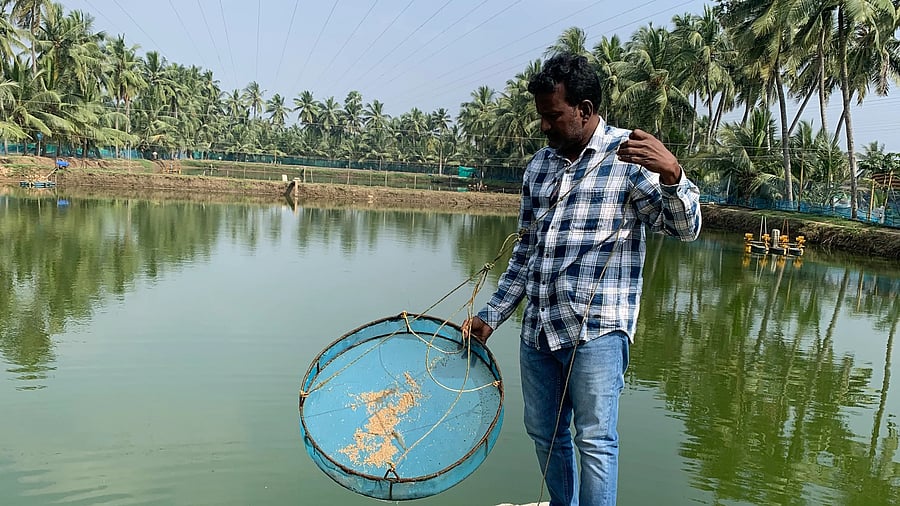
Amid tariff woes, AP to promote domestic consumption of shrimps
Credit: Special arrangement
Hyderabad: Facing mounting pressure from US tariffs, shrimp farmers in Andhra Pradesh and the state government are shifting their focus towards the domestic market.
To boost domestic shrimp consumption, the Andhra Pradesh government has proposed establishing the Andhra Pradesh Prawn Producers Coordination Committee (APPPCC), modeled after the successful National Egg Coordination Committee (NECC).
The APPPCC will be incorporated under the Companies Act and include all stakeholders and shrimp farmers as members. This decision was made during Wednesday’s Executive Committee meeting of the Andhra Pradesh State Aquaculture Development Authority (APSADA).
Beyond establishing the APPPCC, the meeting addressed alternative strategies for aquaculture farmers grappling with export challenges. With existing tariffs set to reach a cumulative 60% when new US duties on Indian shrimp exports take effect on August 27, APSADA has outlined several mitigation measures like the authority will explore opportunities in South Korea, the UK, EU, Middle East, Russia, and African countries. For this, it is collaborating with MPEDA, the Department of Commerce and Industries, and the Government of India. It will leverage the Free Trade Agreement (FTA) with the UK to enhance export prospects.
Besides encouraging processors and exporters to focus on premium, value-added products for both export and domestic markets, the focus will be on promoting the APPPCC to increase local consumption of fish and seafood products, following the NECC model.
However, aquaculture farmers express skepticism about the proposal’s feasibility. While the APPPCC concept was first floated a year ago, it failed to gain traction. Farmers argue that premium export-quality shrimp may not command adequate prices in the domestic market.
“A 20-count-per-kilogram shrimp exported to the USA would need to sell for a minimum of Rs 1,000 in the domestic market. Who will pay such high prices for consumption? Very few would,” explained DBV Subramanyam, a shrimp farmer from Amalapuram in Andhra Pradesh.
“Additionally, shrimp is perceived as a non-vegetarian product, unlike eggs, which even many vegetarians accept. While establishing the APPPCC isn’t problematic, it won’t fully address the export challenges created by US tariffs. Promoting domestic consumption will be a long-term shot requiring immediate mitigation measures in the interim,” Subramanyam told DH.
Shrimp grading is based on count per weight rather than total weight. Lower counts per kilogram indicate larger sizes, which command premium prices. Larger shrimp are considered superior in taste and are particularly prized in the US market. The coveted 20-count-per-kilogram varieties represent the largest, most valuable shrimp, while smaller varieties (100, 90, or 80 count) are typically exported to other markets, including China.
India exports shrimp to diverse markets including Japan, the USA, the Middle East, the European Union, and Southeast Asia.
During fiscal year 2023-24, India exported marine food products worth $2.55 billion to the US, with shrimp comprising 92% of these exports. Andhra Pradesh accounts for approximately 75% of India’s total shrimp exports, underscoring the state’s critical role in the industry and the significant impact of US trade policies on local farmers.